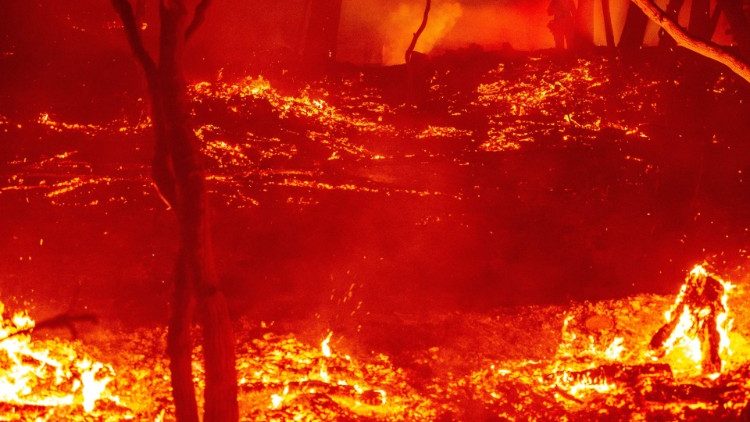Fires, Landmines, and International Silence in Nagorno-Karabakh

In the rugged landscapes of Nagorno-Karabakh, a region scarred by decades of conflict between Armenia and Azerbaijan, a new crisis is unfolding amid the whispers of international silence. For some odd reason, forests have begun burning with alarming intensity, particularly in the Martakert district and surrounding areas. These wildfires, reported in recent days, are not just destroying precious ecosystems but are also triggering deadly explosions from landmines littered across the terrain—remnants of past wars that continue to haunt the land.
A Legacy of Devastation
Over the past five years, the natural environment of Nagorno-Karabakh has suffered more devastation than in the preceding three decades combined. Deforestation has accelerated at an unprecedented rate, ecosystems have been shattered, and species are facing extinction due to the rampant extermination of wild animals. All of this has been meticulously documented by environmental observers and local reports, painting a grim picture of deliberate neglect and destruction in a post-conflict zone now under Azerbaijani control. The region's biodiversity, once a haven for unique flora and fauna, is unraveling faster than ever before.
Mysterious Fires and Official Responses
Now, these mysterious forest fires are adding fuel to the literal and figurative fire. Starting in Martakert and spreading beyond, the blazes have scorched vast swaths of forested land, as confirmed by local sources. Azerbaijani authorities claim to have contained fires in areas like Khojavend, Shusha, and Khojaly through intensive firefighting efforts involving hundreds of personnel and equipment.¹
Yet, the origins of these fires remain shrouded in ambiguity, raising questions about whether natural causes or something more sinister is at play in this strategically sensitive region.
An Unconventional Demining Method?
One particularly alarming aspect of these fires is their interaction with the landmines that densely contaminate the area. Nagorno-Karabakh is one of the most mined regions in the world, with estimates suggesting over one million landmines planted during conflicts in the 1990s and 2020. As flames sweep through the underbrush, the intense heat can trigger these buried explosives, causing uncontrolled detonations.
While this might seem like a tragic side effect, it inadvertently accelerates the demining process—a task that experts and Azerbaijani officials themselves have projected would take anywhere from 10 to 30 years and cost billions of dollars under conventional methods. Traditional humanitarian demining, conducted by organizations like the HALO Trust and Azerbaijan's ANAMA, is painstakingly slow, with only thousands of hectares cleared annually despite ongoing efforts.² In contrast, these fires could "help" by detonating mines en masse, potentially shortening the timeline dramatically—but at what cost?
Violation of International Law
This method, if intentional, raises profound ethical and legal concerns. Using fire to clear landmines not only endangers any remaining civilians, firefighters, and wildlife but also inflicts widespread environmental damage. Such practices are illegal under international law, specifically the United Nations Convention on the Prohibition of Military or Any Other Hostile Use of Environmental Modification Techniques (ENMOD Convention). Adopted in 1976, ENMOD prohibits the military or hostile use of techniques that modify the environment—such as setting large-scale fires—to cause widespread, long-lasting, or severe effects, even if framed as post-conflict "clearance."³
This treaty, ratified by both Armenia and Azerbaijan, aims to prevent the weaponization of nature itself, a principle that could be violated if these fires are proven to be anything but accidental. Furthermore, broader international humanitarian law, including Article 55 of Additional Protocol I to the Geneva Conventions, mandates protection against methods of warfare that cause excessive environmental harm, reinforcing the illegality of uncontrolled detonations in sensitive ecosystems.
A Deafening Silence
Compounding the tragedy is the deafening silence from major international news outlets. While regional media from both Armenian and Azerbaijani sides have reported on the fires, global coverage is virtually nonexistent. We need not point fingers at specific international media entities that are turning a blind eye—it's painfully obvious. This lack of scrutiny allows the environmental catastrophe to unfold unchecked, perpetuating a cycle of destruction in a region already reeling from ethnic displacement and unresolved tensions.
As Nagorno-Karabakh's forests burn, the explosions echoing through the valleys serve as a stark reminder of the intertwined fates of nature and human conflict. What appears as a natural disaster may well be an expedient shortcut to land reclamation, but it comes at the expense of irreplaceable ecosystems and violates core principles of international law. Urgent calls for independent investigations and enhanced environmental protections are needed to prevent further "odd" calamities in this fragile corner of the world.
